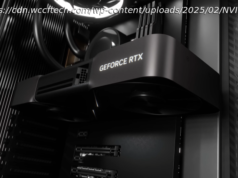The Galaxy J8 comes with an Infinity Display design that offers an immersive multimedia viewing experience
“The Galaxy J8 comes with an Infinity Display design that offers an immersive multimedia viewing experience”
Just a few years back, Samsung was considered the undisputed king of mid-range smartphones in India. Since then, Chinese companies including Xiaomi, OPPO, and Vivo have not only posed a strong challenge to the South Korean company, but also taken over a majority of the market share. With the aim to provide a flagship experience in the mid-range and regain some of the lost customers, Samsung recently introduced the Galaxy J6 ( review) and Galaxy J8 ( first impressions) with Infinity Displays in India. Having reviewed Galaxy J6 earlier, we have now managed to spend enough time with the Galaxy J8 to figure out if the handset is worth your hard-earned money.
In the last two years, Samsung has produced handsets with impressive build quality and designs. The new Galaxy J8 continues the same trend. The company has now brought the Infinity Display design, albeit with notably thicker bezels compared to the Galaxy S series, to the J series with the Galaxy J6 and Galaxy J8. Even though we still don’t get the curved sides on the display here, the relatively narrow bezels allow for a more immersive viewing experience while watching movies or other multimedia content. Also, you get a big display – a 6-inch panel to be precise – in a compact frame, which makes it easy to hold the handset in one hand.
To the brand’s credit, the matte finish on the Galaxy J8 looks and feels good in the hand. The design is fairly minimal, sans the regulatory text on the bottom at the back. There is a vertically-orientated dual camera module in the middle, assisted by an LED flash module above the fingerprint sensor. The power button is located on the right side of the handset and the volume rocker is present on the left spine, which makes it convenient to take screenshots with just one hand. Both sets of buttons are easily accessible. There is a micro-USB charging port at the bottom, the presence of which is disappointing as most of the industry is making a shift towards the USB Type-C port for charging. At least Samsung hasn’t given up on the 3.5mm audio jack, which has been placed at the bottom in this case. Notably, the front camera is supported by an LED flash to offer better low-light selfies. Coming to the display, the HD+ (1,480 x 720 pixels) Super AMOLED panel from Samsung comes with all the goodness that you generally expect from the displays on the company’s handsets. The colours are punchy and a bit oversaturated, but this is something we have come to expect with the brand’s phones. The viewing angles and maximum brightness ensure that the handset remains functional in outdoor conditions under direct sunlight. Truth be told, FHD+ displays are now more common in this price range. However, we did not find the lack of density to be a major issue with the display. In fact, the inclusion of an HD+ panel instead of FHD+ works towards offering an improved battery life to the users. We will still point out that the lower resolution does present itself as an issue while playing most of the new games, which demand a better panel to reflect their visual potential in terms of graphics. Here’s a closer look at the handset.
The Samsung Galaxy J8 comes with a dual rear camera setup, comprising a primary 16MP sensor with f/1.7 aperture and a 5MP sensor with f/.9 aperture. At the front, you get a 16MP sensor, with a f/1.9 aperture for taking selfies. With the default camera app, users get different camera modes including Pro, Panorama, Beauty, Live Focus, Stickers, and Continuous Shot.
The Pro mode essentially allows you to adjust the white balance and ISO. For those who are unaware, the Live Focus feature allows users to adjust the background blur while clicking pictures as well as later. The camera settings allow you to take pictures with grid lines, location tags, with the HDR mode enabled and a timer.
With the front camera, you get the option to capture pictures with wide-selfie and selfie-focus modes. Talking about the performance of cameras, we found that the front and rear camera modules managed to take some decent pictures in good lighting conditions. The level of detail, as well as the depth effect, both seemed fairly impressive. However, things got tricky in low-light conditions, especially at night. Unfortunately, some of the pictures taken with both front and rear cameras turned out to be grainy in the aforementioned conditions. Despite offering a good camera performance otherwise, this can be seen as a major caveat for the handset. Have a look at some camera samples to get a better idea about the optics offered by the Galaxy J8.
To address the elephant in the room, the Galaxy J8 is powered by the Snapdragon 450 SoC, which is definitely not fitting for a handset in this price range. To give you further perspective, Xiaomi’s Redmi 5, which is priced around Rs 12,000 less than the Galaxy J8, comes with the very same processor. In a market where competition is at its peak and manufacturers are offering powerful processors at cheaper price points, Samsung seems to have lost the plot in this category. Having said that, the phone manages to handle regular apps and games with ease, but heavy games like PUBG and Injustice 2 are better played at low graphics settings.
Talking about the memory, there is 4GB of RAM and 64GB of built-in storage that can be further expanded via microSD card up to 256GB. Moving to the software, the Galaxy J8 runs Android 8.0 Oreo-based Samsung Experience UI v9.0 out of the box. Apart from all the pre-loaded apps that might expect out of the Experience UI, there are some notable inclusions in the form of Samsung Pay mini and Samsung Mall. Samsung Pay mini is basically a stripped-down variant of the Samsung Pay service from the company and allows users to transfer money using Unified Payment Interface (UPI). The sole purpose of this app is to make it easier for you to make payments using mobile wallets and UPI. Coming to the Samsung Mall, the app makes use of the phone’s camera to help users find things online by clicking their pictures. Apart from this, there are some Microsoft apps pre-installed, as has been the case with most recent handsets from the brand.
There is a chat-over-video feature too, which allows you to reply to text messages without stopping the video that you are watching. This particular feature can come in handy when you have to watch a Sacred Games episode but you need to reply to friends or family about your whereabouts (happens to us all!).
Overall, we did not face any particular issues while navigating through the UI, switching between apps, or multitasking. However, it needs to be pointed out that Samsung smartphones have a reputation of not ageing well in terms of UI performance.






